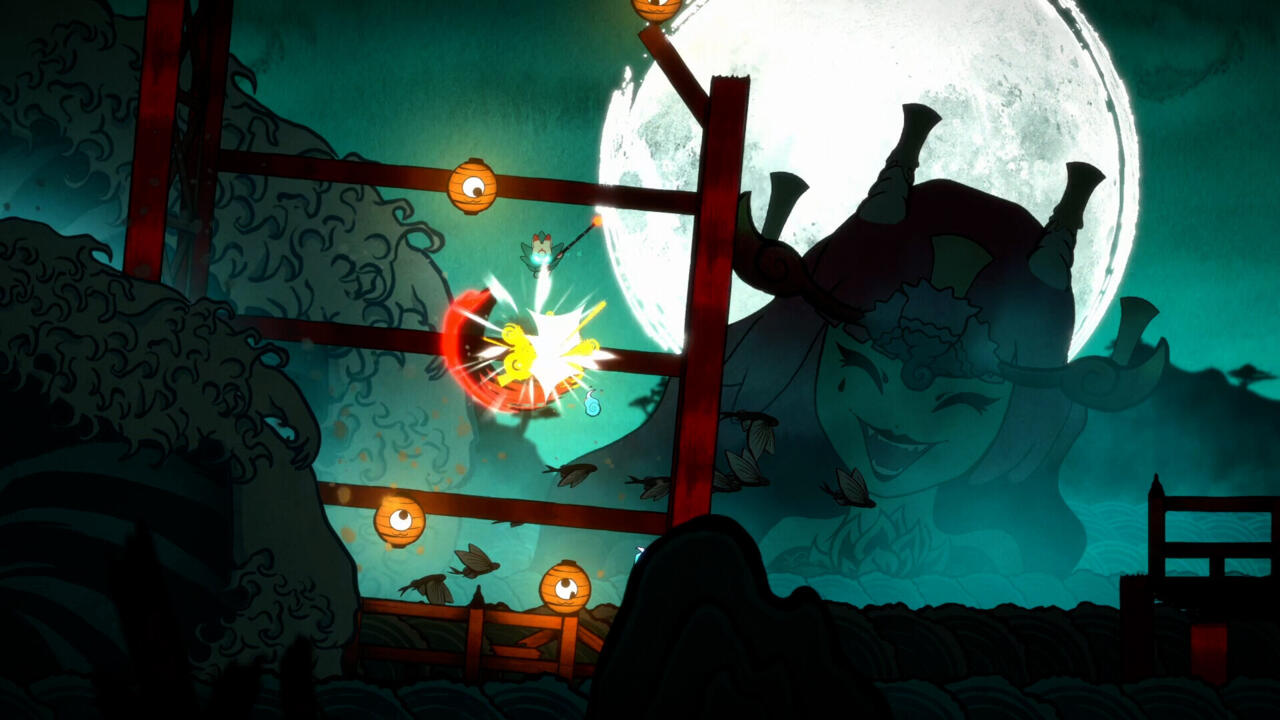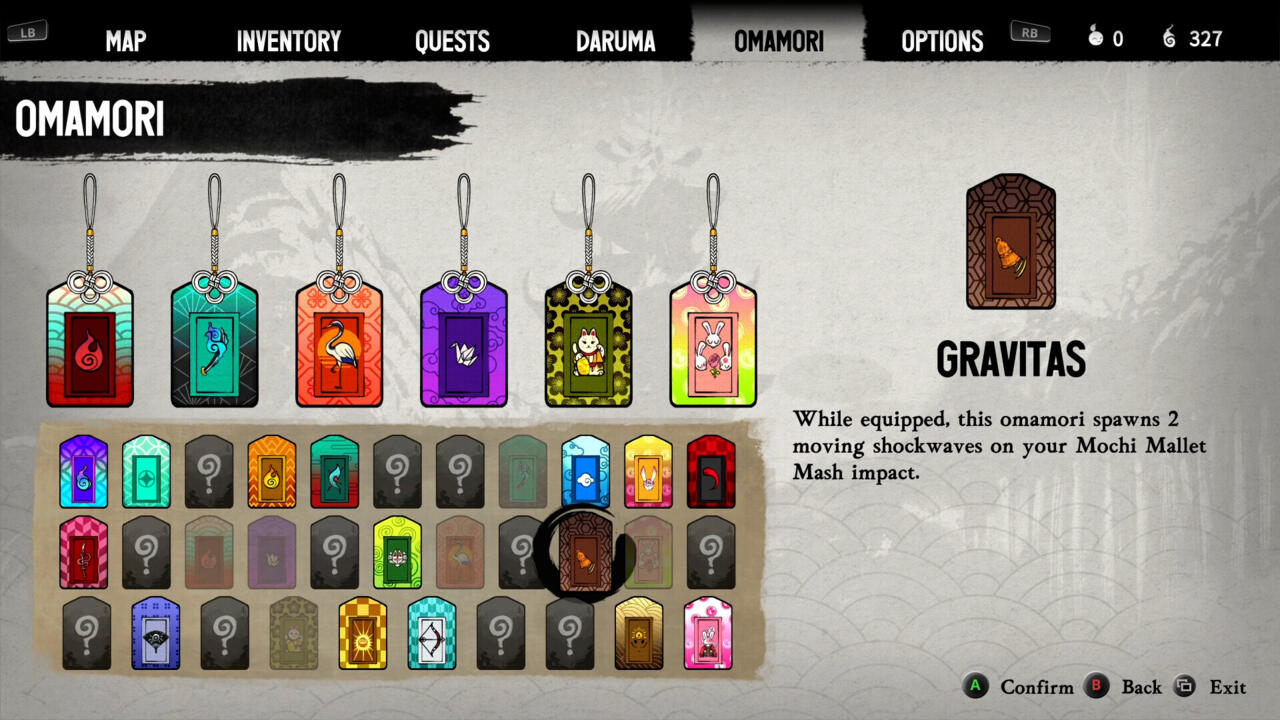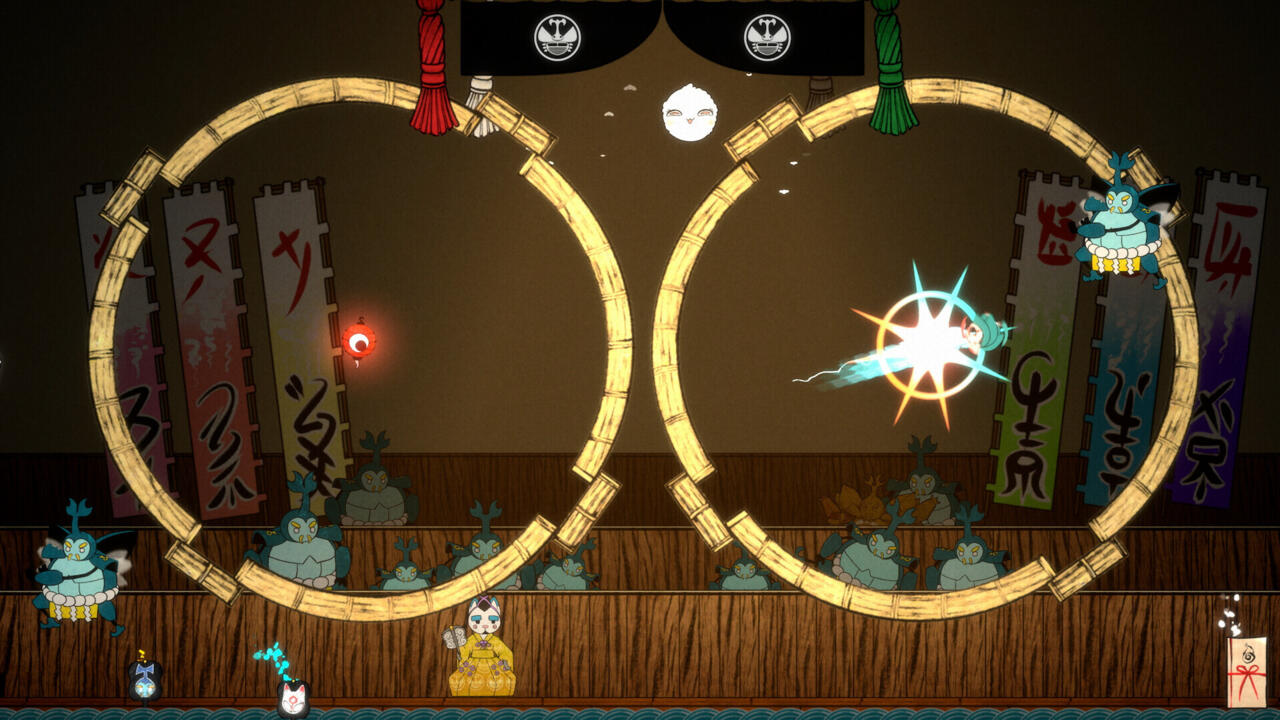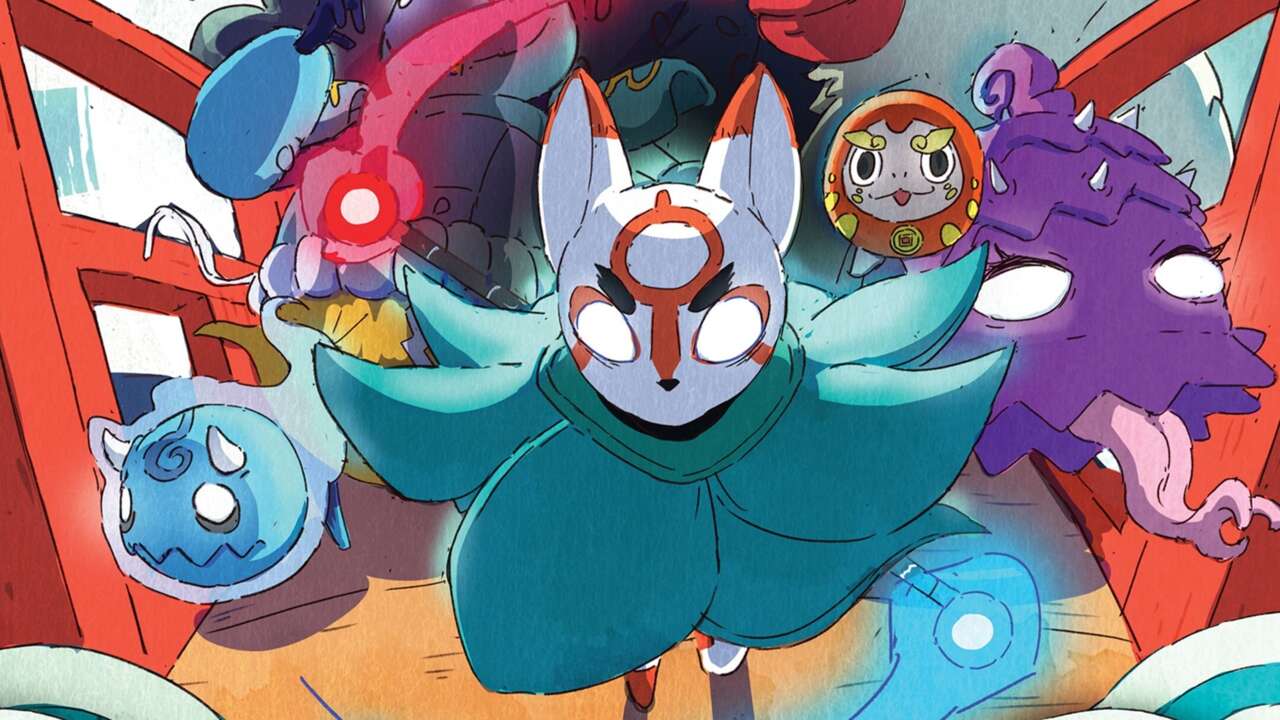As more metroidvania games come out, we’re seeing fewer of them resemble the originators of the subgenre–Super Metroid and Castlevania: Symphony of the Night–and more that clearly take inspiration from those that came after. Bō: Path of the Teal Lotus is one such example, with tons of clear parallels to Hollow Knight in terms of both gameplay and narrative. In a few ways, this works extremely well for Path of the Teal Lotus–if you’re going to take inspiration from a game, do it using one where there’s a lot of good stuff to build on. However, Path of the Teal Lotus pales in comparison to its inspirations by making mechanics and features that were already problems in Hollow Knight, like an unclear map and frustrating platforming gauntlets, worse. It makes for an altogether decent-enough game if based solely on its own merits, but one that doesn’t stand out at all when held up against its juggernaut contemporaries.
In Path of the Teal Lotus, you play as the titular Bō, a celestial blossom charged with fulfilling an ancient prophecy and defeating a terrifyingly large monstrosity after falling from the heavens. Armed with a bō staff, Bō must traverse and fight their way through picturesque locales, meeting characters and fighting monsters inspired by Japanese folklore. It’s an incredible narrative tee-up, but one that comes after hours of coy character dialogue and not much in the way of direction beyond “go get this ability to get to the next area.” Path of the Teal Lotus’ story takes a long time to get going, leaving the first half of the game feeling directionless. And once a story does start falling into place, the game is already heading toward its conclusion, culminating in an overall narrative tempo that initially feels far too slow before becoming rushed and difficult to follow.
And I wanted to get lost in this game’s world. Path of the Teal Lotus is a beautiful game, featuring a colorful, hand-drawn 2.5D style that incorporates vibrant greens, electric blues, somber purples, and shining reds. Character and enemy designs are varied and pop against the backdrop, with details helping to highlight NPCs you want to talk to and enemy weak points you want to bash. The world relies on the tried-and-true method of associating a specific color with each location and then relying on said color to depict the same location on the map, reinforcing each distinct locale and the unique challenges you’ll encounter there, whether it’s the icy blue of a snow-covered mountaintop or soft pink of a sakura-filled forest.
Composer Moisés Camargo brings these locales to life with an incredible musical score that incorporates traditional Japanese string instruments. The overall sound design is great, too, and pairs with distinct visual indicators to help discern what’s happening to Bō during especially hectic scenes–a sharp clang and small kickback burst letting you know that Bō is attacking impenetrable armor, for example, or a satisfying boing and brief release of white particle effects indicating that Bō successfully bounced off an enemy’s head.

But for as beautiful as the world is to look at and listen to, it’s far too tricky to get around. Path of the Teal Lotus attempts to straddle the line of a traditional action game’s linear progression and a metroidvania’s looping exploration, and it doesn’t quite succeed at either. Each of its areas is mostly self-contained, the spokes of a wheel connecting back to one hub. In an entirely linear game, a structure like this wouldn’t be a problem as you’d handle each spoke one by one. But Path of the Teal Lotus leans hard into those metrodivania trappings, with the main quest and multiple optional side quests requiring you to backtrack to other areas. Though a fast-travel system helps, you still have to travel to specific points in order to use this system and the rarity of such points means you spend a lot of time just trying to reach them. Backtracking gets harder the further into the game you get as the spokes of the map get longer and longer, distancing themselves and going against the necessary interconnectivity to alleviate the frustration of aimless exploration.
Worse, Path of the Teal Lotus’ map isn’t very good. Multiple times, I’d look at it and wonder where I was supposed to go next, with the formatting suggesting I had explored every area. Eventually, I’d stumble upon an NPC or hallway I had missed–Path of the Teal Lotus marks a room having been fully explored even if you’ve only just walked past it, but it doesn’t put markers for additional discoveries in that room unless you actually fully explore said room. The result is a map that sometimes says you’ve fully uncovered a corner of the map when, in fact, you may have actually not gone into one of the areas where a pathway leads to where you next need to go. An objective tracker graciously alleviates much of the guesswork, at least pointing you in the right direction so you know which locale to explore, but this only lessens the unrewarding guesswork of exploration, rather than outright removing it.

On the flipside, combat in Path of the Teal Lotus is great. Bō swings their staff with acrobatic grace, knocking back enemies with a satisfying thwack. While in the air, the staff can be used to bounce off enemies, adding a degree of aerial finesse to Bō’s dance-like movements. It’s simple to pick up, but there’s a remarkably high skill ceiling, especially in the latter half of the game when the movesets of the tough-as-nails yokai boss fights build on Bō’s additional abilities–like a dash and spider ball-like wall roll–to ramp up the tension of each confrontation. Bō’s rhythmic movements aid in mastering the patterns that underlie each combat encounter; there’s a dance to learn here, and each counter you master ensures you lead the performance. A few of the boss fights frustrated me enough to put the game down for a while, but my qualms were never with the mechanics, just my own inability to maneuver through the enemy’s attacks in the way the game was clearly indicating.
I do have qualms with the platforming, however. Bō’s floaty movements may add to the dance-like sensation of the combat, but they transform the platforming segments in the game into terrible slogs. One moment in particular–in which you have to navigate two back-to-back frustratingly long platforming gauntlets in an icy cave–almost convinced me to put the game down for good. The structure of the game simply does not allow for Bō to perform tight jumps and precise movements, leading to a handful of missed jumps that can be rage-inducing during sections of the game where one-too-many mistakes can send you back to the last spawn point at the start of the series of spikes, moving platforms, crushing walls, and Bō-tracking bats. Thankfully, many of the platforming challenges in the game are optional, hiding secret shortcuts or collectibles. But the handful of times that the mandatory ones pop up stalls the momentum of progression to an irritating halt.

Bō: Path of the Teal Lotus is a gorgeous game, featuring an incredible art style and sound design that strengthen an already colorful world that I want to explore. But getting around in the game is regularly a chore, and Bō’s floaty, dance-like movements too often lead to frustrating deaths during platforming gauntlets. The game at least shines through its combat, and the story is exciting once it does actually get going–but there’s just too much in the way to fully enjoy what the game does well.
